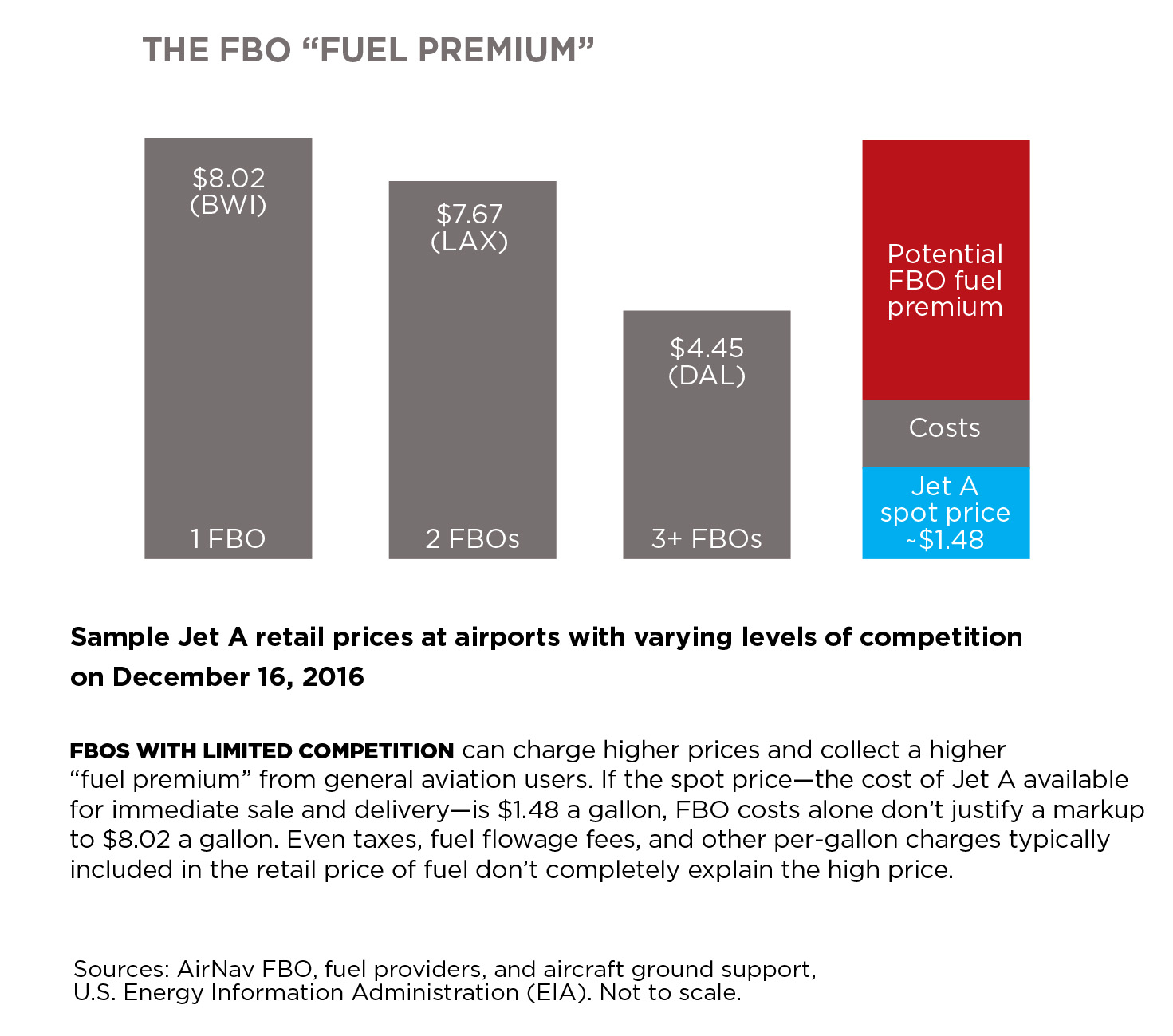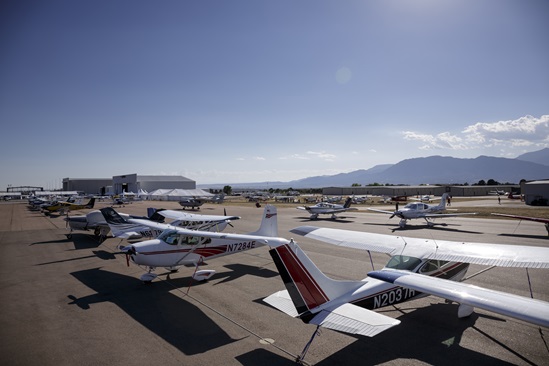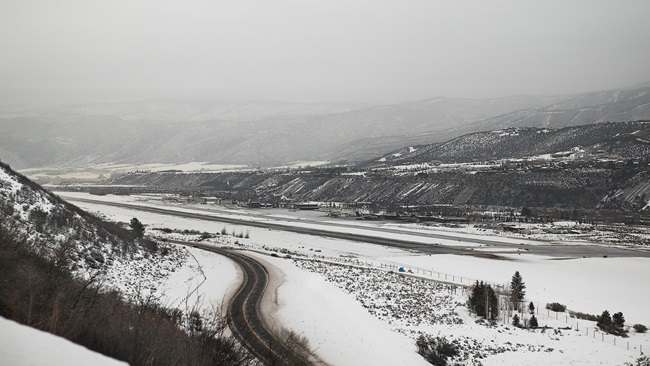AOPA battling excessive FBO fees
FBO consolidations contribute to unfair pricing; pilots held hostage
Upon learning that the fees to park overnight at Baltimore-Washington International Airport totaled some $153 and that avgas was $8 a gallon, the pilot of the Piper Saratoga decided to go elsewhere. But he did take the time to complete AOPA’s online form reporting the higher-than-expected fees. He is just one of hundreds of pilots who sent in examples after AOPA reported earlier this year that it was seeking information on FBO fees that seemed beyond market norms.
Don Mayer, AOPA director of research and analysis, has compiled the results. Scores of them fall into a category he calls “exceptionally egregious,” the arbitrary cutoff being fuel that is more than $6 a gallon or fees for minimal or no services topping $100. “We still need pilots to share additional detailed comments, including locations and prices paid,” Mayer said. Members can post comments at www.aopa.org/FBOfees.
Signature, already the largest FBO chain in the world, acquired Landmark Aviation, the third largest chain, in early 2016, giving it approximately 160 locations globally. The next largest chain is Atlantic Aviation, which has approximately 70 locations. Owned by British-based BBA Aviation, Signature paid more than $2 billion for the 68 Landmark locations, which is about 10.6 times Landmark’s earnings—what one business publication called “a significant multiple for an FBO.” Landmark had doubled in size the year before when it acquired Ross Aviation, part of a growing pattern of FBO chains consolidating. A few years earlier Landmark had acquired Encore Aviation and several independent FBOs.
Before approving Signature’s purchase of Landmark, the U.S. Department of Justice required Signature to sell six locations to buyers approved by DOJ’s antitrust division, a move to increase competition at airports where Signature and Landmark were competitors.

Pilots responding to AOPA’s recent inquiries noted that in many locations fees shot up considerably after Signature acquired the Landmark locations and many others over the past few years. Some of the fees reported are eye-opening, for sure. Few average GA pilots can relate to what it costs to operate a Gulfstream 650, but most will agree that $2,500 to park for 15 minutes while dropping off a passenger at Boston’s Logan International Airport, a Signature location, is high even by business jet standards. The same operator paid another $2,500 a few days later to pick up the same passenger. “I get that they have overhead to cover but paying that much money is ridiculous,” the corporate pilot reported.
But such fees are not exclusive to Signature. A pilot picking up a passenger at Ross Aviation’s Scottsdale location was charged $300 for waiting 40 minutes on the ramp. The pilot of a TBM single-engine turboprop reported paying nearly $200 in fees when picking up a passenger at Taughannock Aviation at Ithaca Tompkins Regional Airport in New York; $165 of the fee was for “handling” even though the pilot reported being on the ramp for five minutes and never shut the engine down. The passenger was not allowed onto the ramp until paying the fees.
“It’s all about access to public places,” said AOPA President and CEO Mark Baker. “Pilots who don't want or need services should not be held prisoner on a public ramp. At many of these locations, there is no way to pass through a gate without going through an FBO lobby. We’re asking the FAA to look at giving GA pilots unfettered access between the ramp and the parking lot.”
Baker, and many of the commenters responding to AOPA’s request for more information, point out that most of the ramps in debate were built with federal tax dollars and then leased by an airport owner to the FBO. “Essentially the FBOs are a concessionaire. The problem is pilots don’t have a choice of purchasing services or not. They are charged just for showing up—held hostage, if you will,” said Baker.
A Piper single-engine pilot writing to AOPA agrees. “What I would like to see is for every airport that receives FAA (our) dollars to be required to provide transient parking at a very reasonable cost. If you want full service and warm cookies, go to the FBO. If you don’t then there should be an alternative.”
Pilots can choose to go to other airports where fees may be lower, but those airports may not be as convenient to the desired destination. Airport owners should understand that flights may simply bypass their locations because of the high fees, resulting in less traffic at the airport, which can have its own ripple effect regarding access to FAA funding. Some FBOs may offer to waive fees with a fuel purchase. However, FBOs at most of the noted airports charge fuel prices that are $2 to $3 more a gallon—or more—than other airports in the region. Choosing to make an interim stop nearby for cheaper fuel adds an additional engine cycle and more flight time, each of which has its own cost.

After hearing more and more complaints from members, AOPA staff in early 2016 began compiling fuel and fee data from a variety of airports across the country. The report was shared with the FAA in late 2016 with a request for the agency to pay more attention to practices at airports accepting federal Airport Improvement Program funding. The funds require airports to be “fair, reasonable, and non-discriminatory” in their practices.
Without permission, the FAA shared the AOPA report with the National Air Transportation Association, which represents FBOs. NATA then issued a message to its members accusing AOPA of wanting the FAA to regulate fuel prices, among other things.
“We’re not out to regulate fuel prices. We believe in the free market,” said Baker. “If pilots are given unfettered ramp access they can then choose to tanker fuel into airports where FBOs choose to charge prices outside of normal market prices. With that, we believe fuel prices at those locations will come down. But now pilots have no choice except to either purchase overly expensive fuel or pay the fees, or in some cases, both.”
After the NATA report in December, AOPA asked its members to share their experiences regarding fees.
Baker met with Maria Sastre, Signature’s president and COO of global operations, in early March. At the meeting, Sastre reported that 95 percent of customers don’t pay the posted fuel price because they take advantage of fuel discount cards, discounts that are typically not available to small operators and individual owners. Sastre said the idea of providing free access to pilots not requiring services was not workable because it does not “fit our model.” The COO said the FBO has steep overhead in ramp equipment and facilities, including the requirement to offer well-appointed lobbies for customers in order to remain competitive.
“Look, I like a nice place as much as the next guy, but most of the time when I’m flying, I just want a way to the parking lot,” Baker said recently, a theme repeated frequently by those sending comments to AOPA.
“I believe for a publicly funded airport, there should be a public parking area without fee, or minimal fee assuming no FBO services were used,” wrote a Pilatus PC-12 pilot after being charged $230 for dropping off a passenger at Signature’s Midland, Texas, location.
“We understand the economics of airport and FBO operations,” Baker said, noting that numerous AOPA employees have managed FBOs and airports. “We strongly support FBOs. We need a healthy FBO infrastructure. The lion’s share do a great job at fair and reasonable prices, but this is simply not the case at some locations. We continue to be concerned about the consolidation in the FBO business, particularly among the chains, at a few locations, probably less than 200 of the nation’s 5,200 airports. Those are important locations to pilots. Those paying their own way and on a budget shouldn’t be forced to go somewhere else nor should they be forced to pay for services they don’t want or, worse yet, simply charged for showing up. Pilots are not looking for a free ride. We’re willing to pay our own way, but any fees need to be reasonable and in sync with the service delivered.”
Self-made entrepreneurs John and Martha King report that fees and fuel prices play an important role in where they do business. The owners of Kings Schools fly everything from light piston singles and helicopters to their Falcon 10 jet. “The determining factor for which airports we use is the price of fuel and fees,” said Martha King. Paying an extra $3 a gallon for fuel can mean a $1,800 increase in fuel costs for a typical Falcon fuel load, she said.
“When the FBO denies use of the airport because of their pricing structure, we lose the use of that airport to general aviation,” John King commented.
AOPA General Counsel and a former inspector general for the U.S. Department of Transportation Ken Mead looks to the federal government to get more involved, given the federal dollars spent at these airports. “No one is watching. There’s a fox in the henhouse and no one is paying attention,” he said. In looking at next steps, Mead concluded that some level of federal investigation may be necessary, whether through the DOT or FAA, Department of Justice, or Government Accountability Office. “We’re considering a number of options.” AOPA also will be reaching out to various aircraft type clubs to gauge the experiences of their members.
“This is an area where we are not going to give up,” Baker said. “We’re asking the FAA for transparency regarding fees and to give us options for getting onto and off of ramps without being encumbered by excessive fees when no services are required.”
Meanwhile, pilots are encouraged to continue to supply AOPA with reports of excessive charges at FBOs. A form for providing comments can be found at www.aopa.org/FBOfees.




